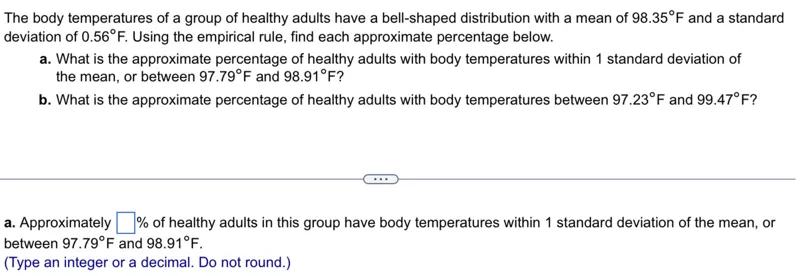Questions: The body temperatures of a group of healthy adults have a bell-shaped distribution with a mean of 98.35°F and a standard deviation of 0.56°F. Using the empirical rule, find each approximate percentage below. a. What is the approximate percentage of healthy adults with body temperatures within 1 standard deviation of the mean, or between 97.79°F and 98.91°F? b. What is the approximate percentage of healthy adults with body temperatures between 97.23°F and 99.47°F?

Transcript text: The body temperatures of a group of healthy adults have a bell-shaped distribution with a mean of $98.35^{\circ} \mathrm{F}$ and a standard deviation of $0.56^{\circ} \mathrm{F}$. Using the empirical rule, find each approximate percentage below.
a. What is the approximate percentage of healthy adults with body temperatures within 1 standard deviation of the mean, or between $97.79^{\circ} \mathrm{F}$ and $98.91^{\circ} \mathrm{F}$ ?
b. What is the approximate percentage of healthy adults with body temperatures between $97.23^{\circ} \mathrm{F}$ and $99.47^{\circ} \mathrm{F}$ ?





